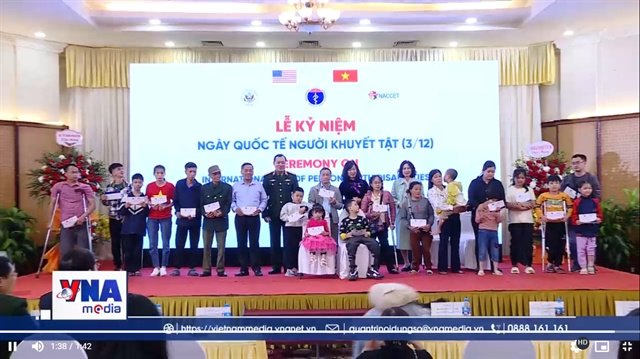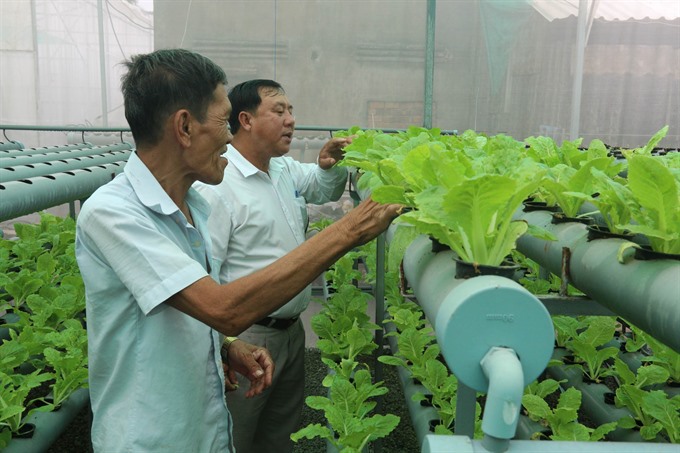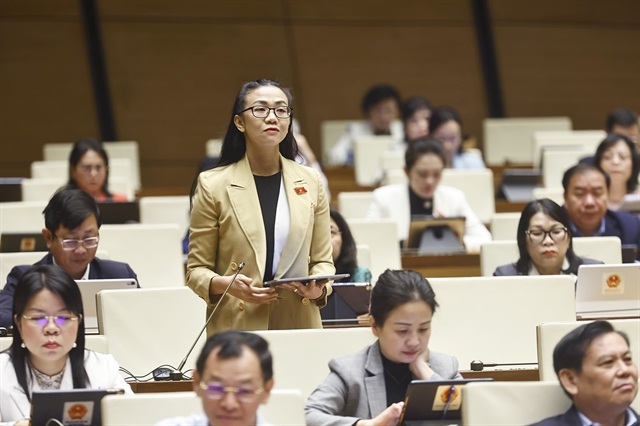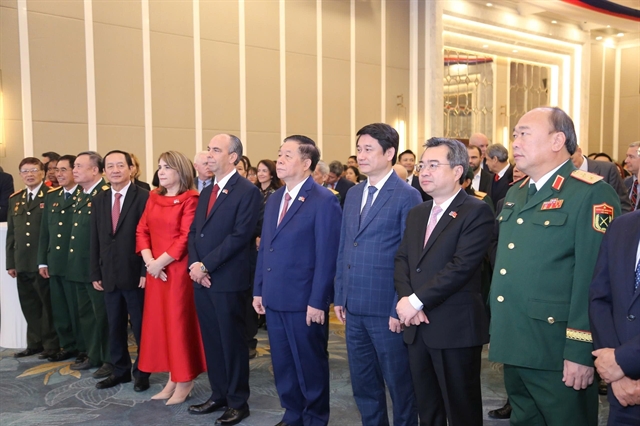 Society
Society

Authorities in Hà Nội will implement more measures to strengthen safe vegetable and meat supply chains for its residents, said vice chairman of the city’s People’s Committee Nguyễn Văn Sửu.
 |
| A hydroponic lettuce garden in the southern province of Tiền Giang. Applying high-tech methods to agricultural production is one of the measures to ensure safe food supply implemented among Hà Nội and other localities. — VNA/VNS Photo Minh Trí |
HÀ NỘI — Authorities in Hà Nội will implement more measures to strengthen safe vegetable and meat supply chains for its residents, said vice chairman of the city’s People’s Committee Nguyễn Văn Sửu.
He made the statement at a conference on evaluating the city’s efforts to develop the chains this year, which took place in Hà Nội last week.
Speaking at the conference, Sửu praised the city’s launching of an electronic system to track the origins of agricultural products as one of its highest achievements in terms of ensuring food safety for its residents.
“[The system] created a platform that connects farmers, enterprises, and State’s supervisors and helped ensure safe consumption,” he said.
The city’s Department of Agriculture and Rural Development had also collaborated well with other localities in terms of poultry disease prevention and quarantine, ensuring they follow the best practices in slaughtering and meat handling, he added.
According to the department, Hà Nội residents consume an average of 7,000 tonnes of agricultural, forestry and aquatic products per month.
While the city’s pork and chicken supply has managed to meet demand, a large amount of other products such as rice, beef and seafood are imported from other provinces and countries.
The situation calls for the development of safe food supply chains that link the city with those providers.
Some of the measures that are going to be implemented from now until 2020 include developing safe and high-tech vegetable growing areas, and applying organic farming methods in agricultural production.
Some 543 safe food supply chains have been created among Hà Nội and 21 localities this year, an increase of 166 chains compared to 2017. About 120 of them were initiated and sustained by the capital city itself.
Apart from the achievements, some shortcomings of agricultural production remained.
Some production areas had not been working at full capacity. Some localities failed to invite enterprises to take part in production.
Some others failed to have proper control of slaughtering activities and of the issuance of certificates of animal quarantine. — VNS



.jpg)
